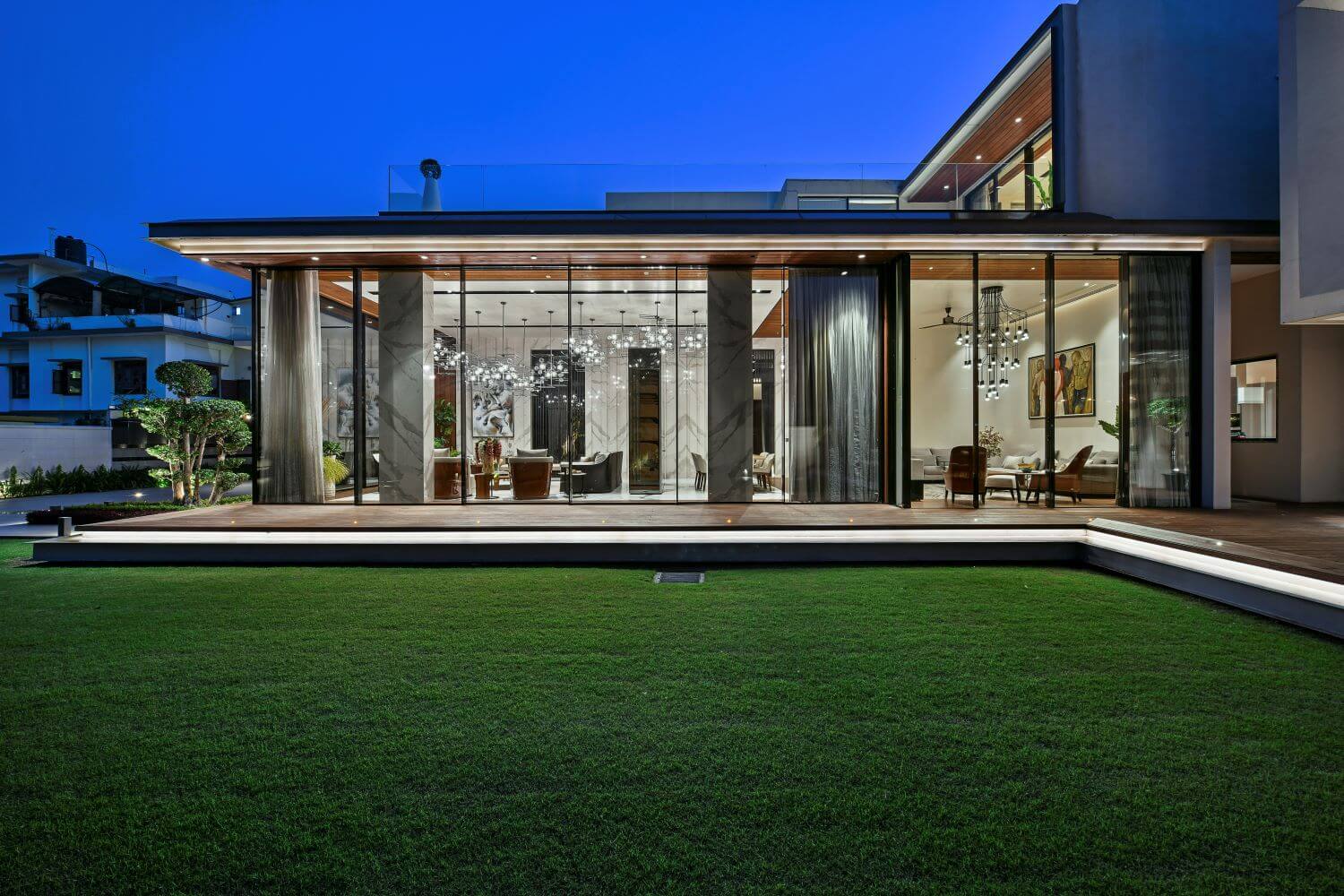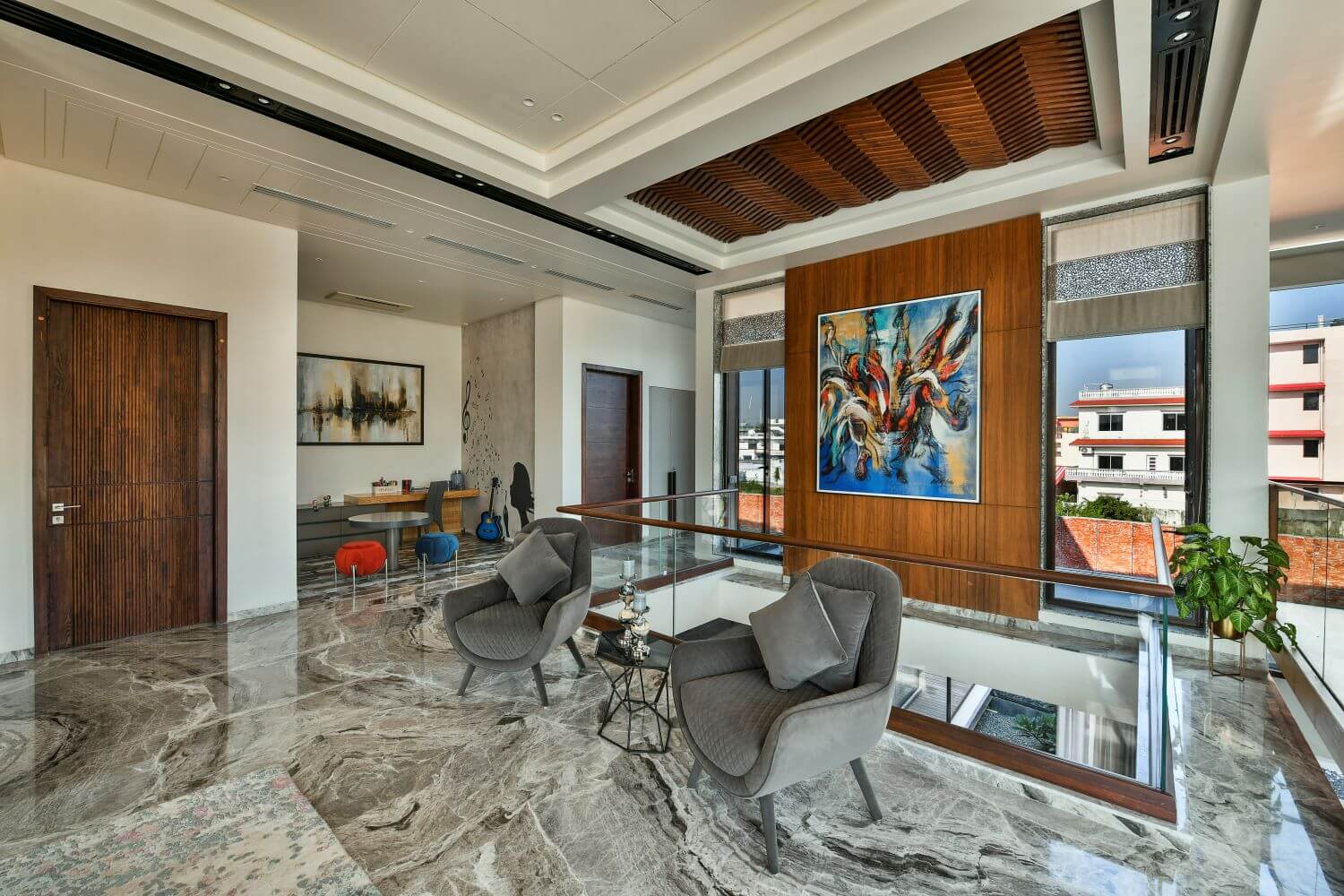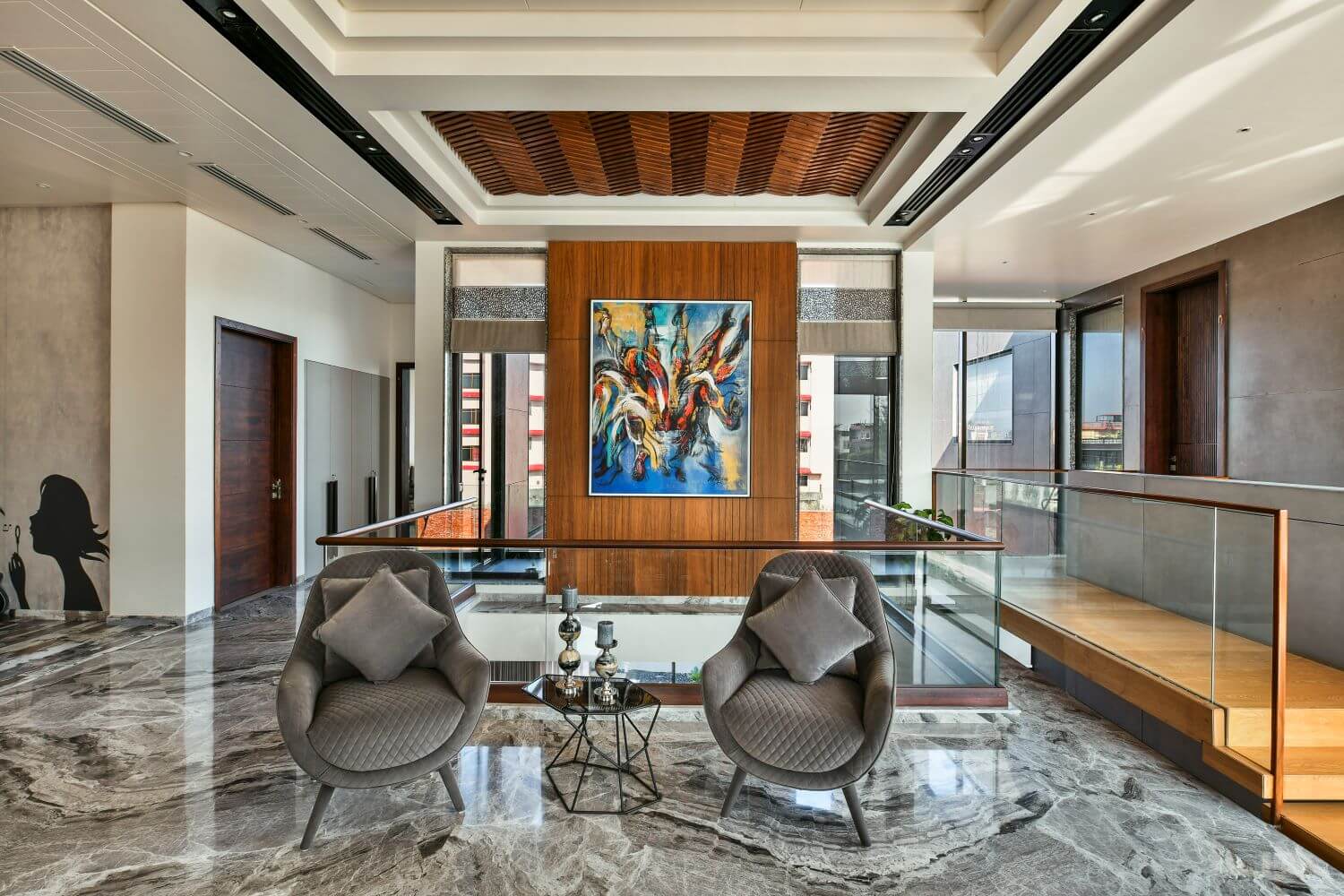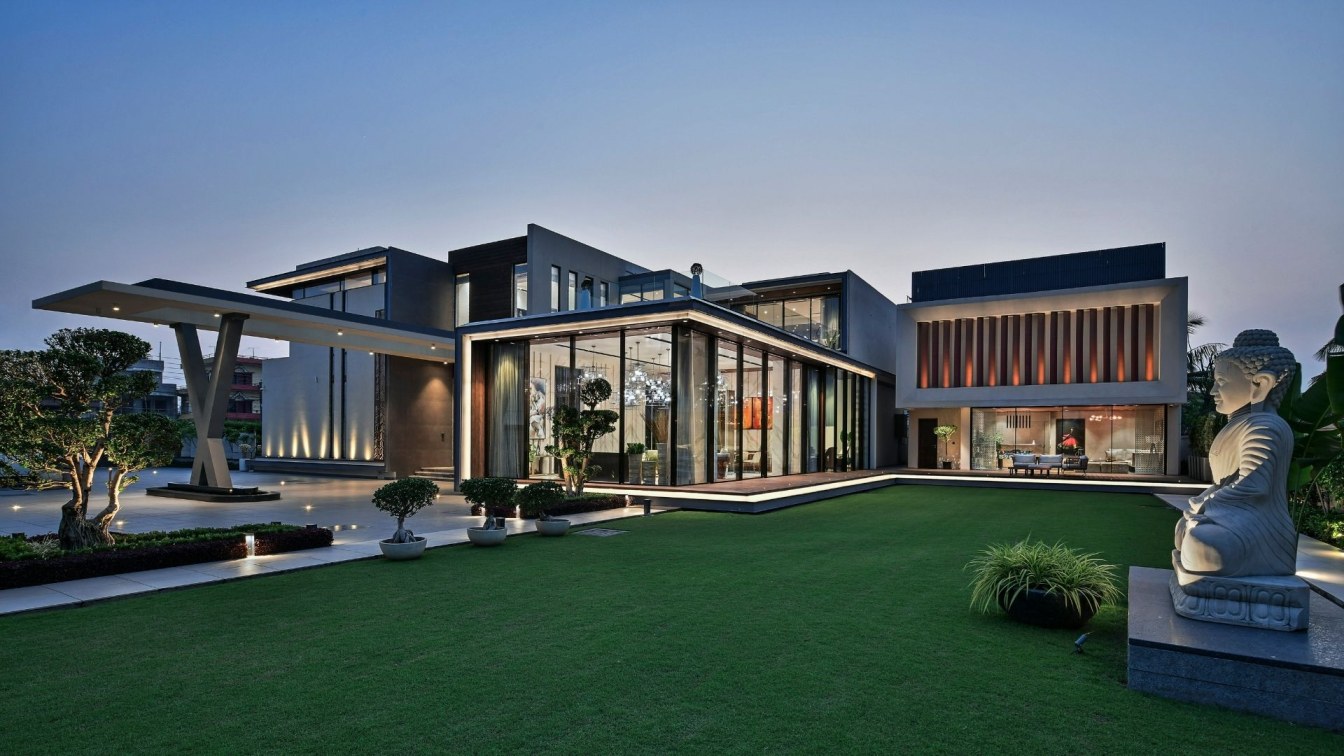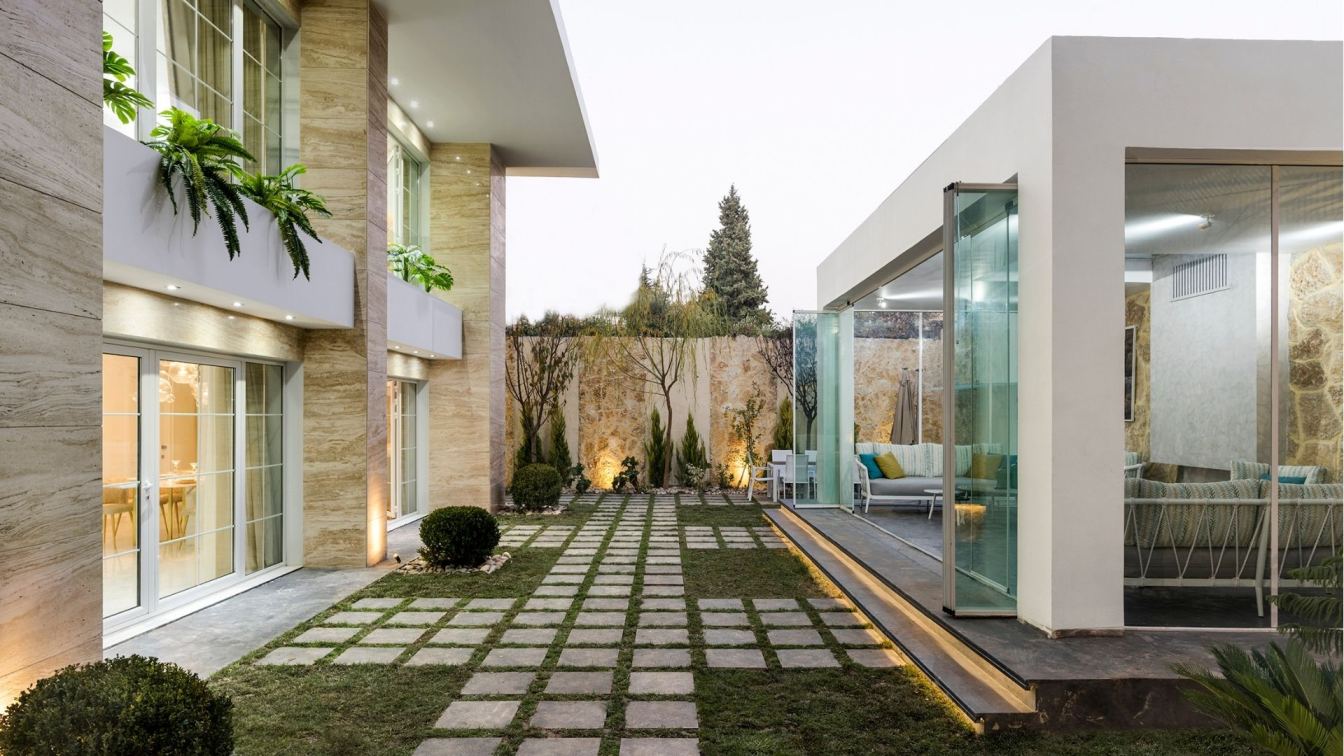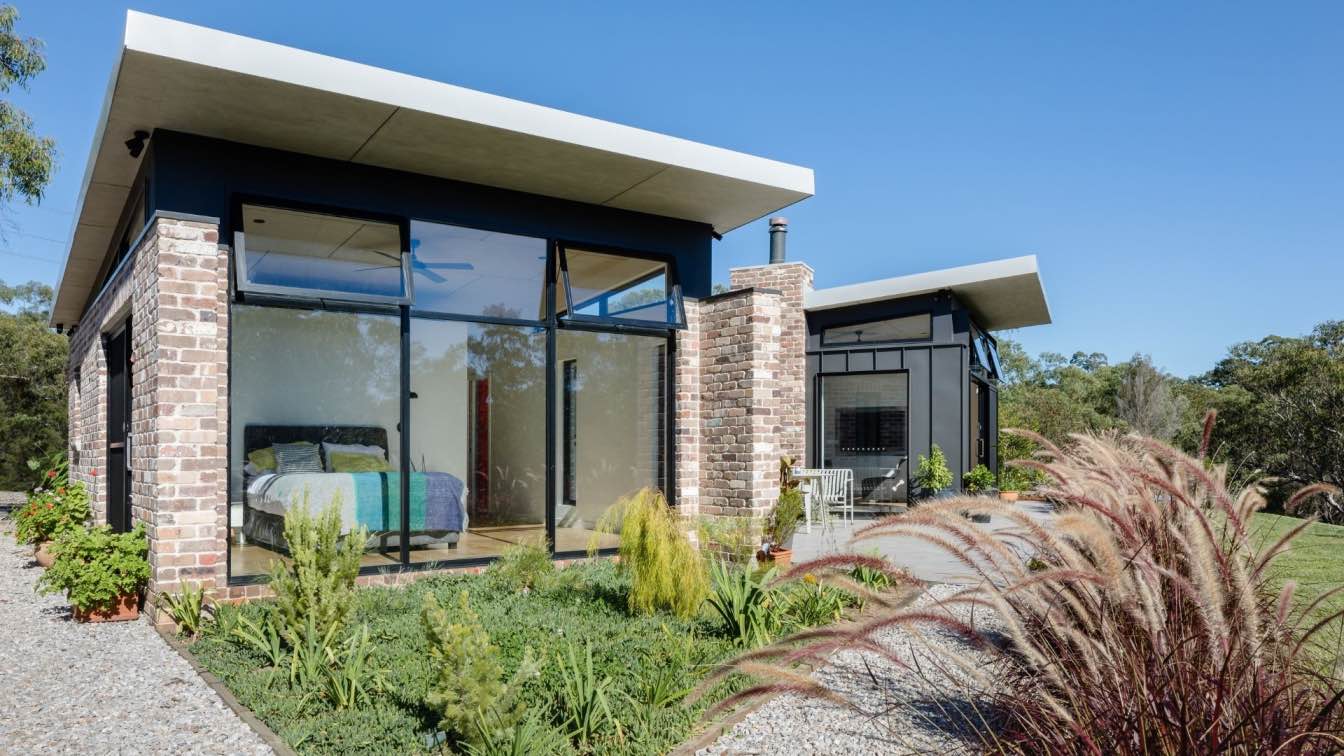42MM Architecture: The client is a young businessman heading a multifaceted industry and intended to built a house that is modern and evolving in its core essence. Therefore, as a representation of his vision we decided to go for a layered planning, with a modern interpretation of the courtyard into green belts. The concept of these layers is exaggerated and translated quite literally into its facia and also the volume.
Theme of the Space:The house is a modern interlock of greens and grays. Here the grays are the voids in the green envelope created by the built mass. The house is conceptually designed to create a volumetric and visual interplay of green belts. The house in its appearance is extremely modern and nonconformist. An intersection of semi-permeable surfaces of metal, glass, and wood encases the space. The materials and punctuations are designed to give a feel of an exoskeleton placed on a greenscape.
Concept:Designed to let nature dance within itself, this house is carefully planned to unite each space with green buffers. A layered convergence of volume that expresses itself distinctly in its spatial planning, facia skeleton, and volumetric geometry. It is a farmhouse that welcomes the beautiful landscape and embraces the scenic beauty through a gradual gradation of spaces.
The sliced geometry and its intersection with the green buffers find its rationale in the spatial syntax of the house. It is fabricated in layers of public, semi-public, and private zones designed to highlight the volume distinctly. Each is segregated with greens that have a unique characteristic of its own. The public zone- a see-through block of glass as an expression of welcome, the semi-public area -carefully eclipsed in parts with greenery flowing into it from the expansive private lawns of the home- slowly giving way to the intimacy of the inner sanctum-the private, quiet part of the house.
The house is oriented east-west and each segment is designed to embrace the east and west sun entering it, through the permeable layers of green buffers. It ensures ample light in every corner of the house while filtering the heat out through the green buffers.

Colour & Material Palette
This house is sculpted with modern sensibilities in steel, glass, and concrete. The interiors represent a minimalistic style. The surfaces are left pure and accessorized with a layer of art. The Elevation and the external finishes of the house are represented in the internal finishes. Materials used are exposed concrete, leather, untreated wood, stone, and metal. The interiors of the house are a representation of the fact that the house is architecturally complete as a whole. Each ingredient of the house is tailored to form a part of a larger story that is the reflection of the aspirations, interests, and lifestyles of its inhabitants. The house is styled to perpetuate an unpolished raw look and is minimalistic in its approach. It is a unique conglomeration of bits that revitalize through an engagement with nature.
The interaction between different volumes of the house is refreshing and evergreen for the inhabitants of the house. The green buffers that segment the volume serve two purposes one it defines the privacy of the house second create intersections and alignments that make the house a masterpiece by different directors.
The volume collides, intersects, and stays parallel to the green vertebra of the house. This spatial experience is our signature style.

Sustainable/green features in the home
The house is enveloped with a blanket of green. The drawing room & lounge barely has solid walls as it embraces the front lawn with corner glass windows. White the staircase and the mandir adorn a beautiful glass roof that flushes light and features vegetation within the segment. While the living room feels like the space in transition, the hearth of the house is where all the spaces converge. It is translucent with screens and double heights. It opens from both front and back to the green lawns of the house. Visually from any point in the house, a layer of greens embarked upon.

Walkthrough:
Drawing room & Dining Room: The drawing room is designed as the part of the landscape. It is only 2 solid wall and 2 transparent that opens into the front lawn. The rooms main feature is the spectacular view of the lawn and the chandelier crowns and combines both drawing and dining space together
Living room: The double heighted living room is the congruent space of the house that unites both the floors, the green segments together. The room feels like a part of the circulation and an independent space in itself. The semi-permeable screens in the space secure the privacy of the space at the same time keeps it connected with the other spaces. The free-standing TV wall help encase the space yet stands out as a feature in itself. You can see the corridor, staircase, mandir and the lobby in the upper floor from this point in the house.

Mandir: It is conceptualized as a parda and is a part of the entrance foyer. It is a feature that is visible from the entrance of the house. The idea was to channelize the positive energy from the place of worship to the entire house. It sits as a feature in the green belt.
Staircase: Designed to glorify the sleekness in design, the staircase pivots around a sheer wall and gives a floating effect. It forms a part of the green buffer in the house and is capped by a glass ceiling above.
Master bedrooms
The master bedroom opens on both ends and highlights textures as the main feature of the room. It has a neat and clean vocabulary while the color is infused through the artwork curated. Wood and stone textures represents the mature yet simple nature of its user.

Master Toilets
There is a subconscious sense of greens in the washrooms. A voluminous vibe is ensured in the spaces with the use of ample natural light within. The jaali filters out the light and creates an interesting light pattern on the floor. The wet area is framed with stone and segregated. It is a space to relax and rejuvenate.
Kids Bedroom
The teenager’s room is designed in a rustic look, with different textures and materials bound together in neutral hues. Here the furniture arrangements are made to suit their changing needs. It entails spaces for both entertaining friends and self-introspective corners. Here the art and embellishments are used to represent the interests of a child. It is beyond simple geometric shapes, capturing both their age and inclinations.
Kids Toilet
The Kid's toilet adorns beautiful blue subway tiles as the feature wall along with a white shell and printed floor. It is a quirky and playful take on the rustic-themed room. It does not break away from the modern look of the house but rather adds another experience to the interior palette.













